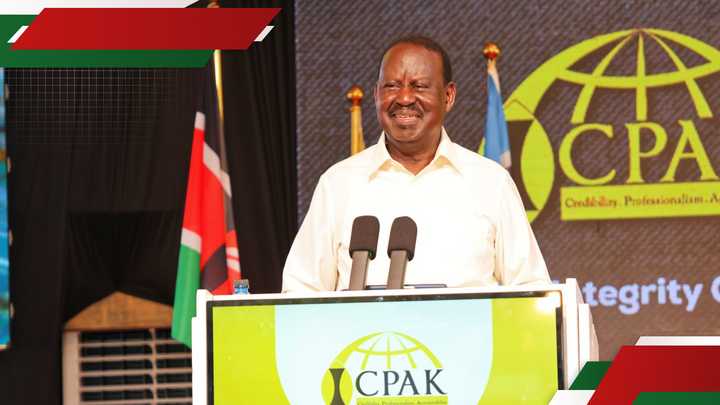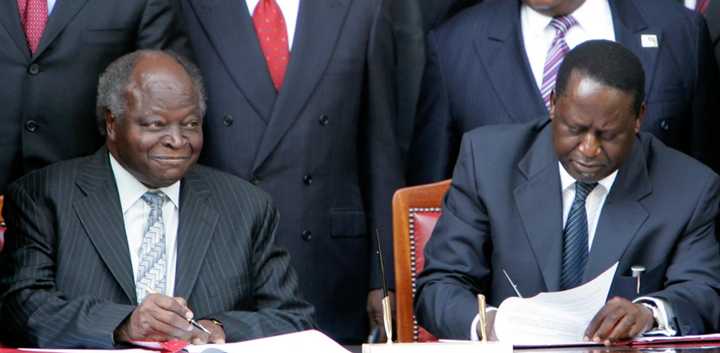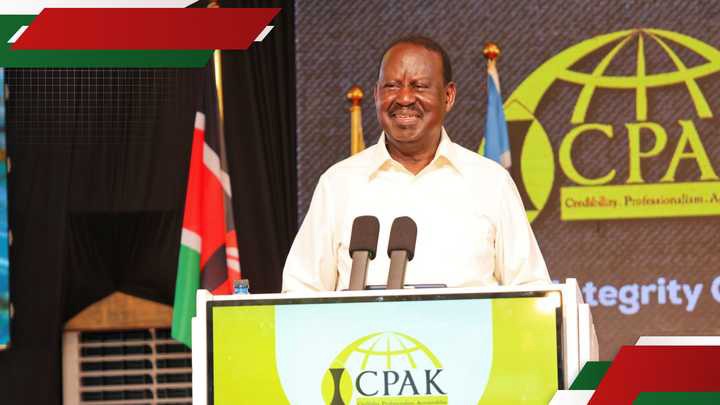- Raila Odinga dismissed the label ‘former prime minister,’ asserting that since Kenya currently has no sitting prime minister, he remains with the title
- He called for the abolishment of the Constituency Development Fund (CDF), arguing that MPs and MCAs should stick to oversight and legislative roles, while governors handle bursaries
- Though the 2010 Constitution eliminated the prime minister role, Raila’s tenure in that position remains a key period in Kenyan political history
Education is Your Right! Don’t Let Social Norms Hold You Back. Learn Online with TUKO. Enroll Now!
Nancy Odindo, a TUKO.co.ke journalist, has over four years of experience covering Kenyan politics, news, and features for digital and print media.
Mombasa: ODM party leader Raila Odinga attended the 42nd Annual Seminar (Edition 1) hosted by the Institute of Certified Public Accountants of Kenya (ICPAK) on Tuesday, May 20.

The seminar revolved around the crucial role of accountants in promoting transparency, accountability, and sound financial governance.
Speaking at the event, Raila emphasised that professionals in the finance sector are the cornerstone of good governance and sustainable development.
PAY ATTENTION:TUKO is in WhatsApp Channels now! Subscribe and read news in favourite messenger.
Why did Raila refuse the former prime minister tag?
However, when introduced as the ‘former prime minister,’ Raila pushed back, saying the title was inaccurate.
“There cannot be a former because there is no current. Therefore, it is just the prime minister—the second prime minister—and it remains like that,” he said, prompting applause and laughter from the audience.
The ODM leader also renewed his criticism of the CDF, arguing that it undermines the oversight and legislative roles of Members of Parliament (MPs) and Members of County Assembly (MCAs).
“The CDF should be abolished. Let governors handle bursaries while MPs and MCAs focus on their constitutional duties. Do all the public participation you want, but in a referendum, you will lose,” he stated firmly.
He further defended ODM’s contribution to President William Ruto’s administration, saying the party had only ‘donated’ experts to help steer the government.
“ODM is not in government. ODM just donated experts to the government. Give them time, and you’ll see what ODM can do,” he said, expressing confidence in their ability to transform key sectors.
How Raila became prime minister
Raila rose to the position of prime minister in 2008 following Kenya’s disputed 2007 General Election.
The vote pitted then-president Mwai Kibaki, now deceased, who had launched the Party of National Unity (PNU), against Raila, who was running under the Orange Democratic Movement (ODM).

While ODM dominated parliamentary seats and early vote counts showed Raila in the lead, a controversial delay and reversal of the results saw Kibaki declared the winner—sparking one of Kenya’s deadliest political crises.
More than 1,000 people lost their lives, and over 600,000 were displaced in the post-election violence.
Amid national turmoil, a mediation process led by former UN secretary-general Kofi Annan and African Union chair Jakaya Kikwete produced a peace agreement in February 2008.
The deal resulted in a grand coalition government and the creation of the prime minister position, which Raila assumed on April 17, 2008.
As prime minister, Raila was tasked with stabilising the country and leading institutional reforms.
However, tensions within the coalition persisted, with Raila frequently accusing Kibaki’s camp of marginalising ODM.
Despite these challenges, both leaders eventually united to support a new constitution, passed by referendum in 2010, which introduced significant governance changes, including devolution.
The prime minister’s role was later scrapped under the new constitutional order, but Raila’s time in that office remains a pivotal moment in Kenya’s political history.
Did ODM form a coalition with UDA?
Meanwhile, the longstanding opposition boss clarified that his party is not in a coalition with Ruto’s UDA government.
He explained that their cooperation is based on a formal Memorandum of Understanding (MoU), not a power-sharing agreement.
Drawing parallels with the US presidential system, Raila noted that appointing individuals from opposition parties does not equate to forming a coalition.
He emphasised that Kenya’s governance structure involves Parliament for oversight, the Executive for policy implementation, and the Judiciary for legal interpretation. Raila dismissed ongoing criticism, insisting the partnership is issue-based and not political.
Source: TUKO.co.ke
